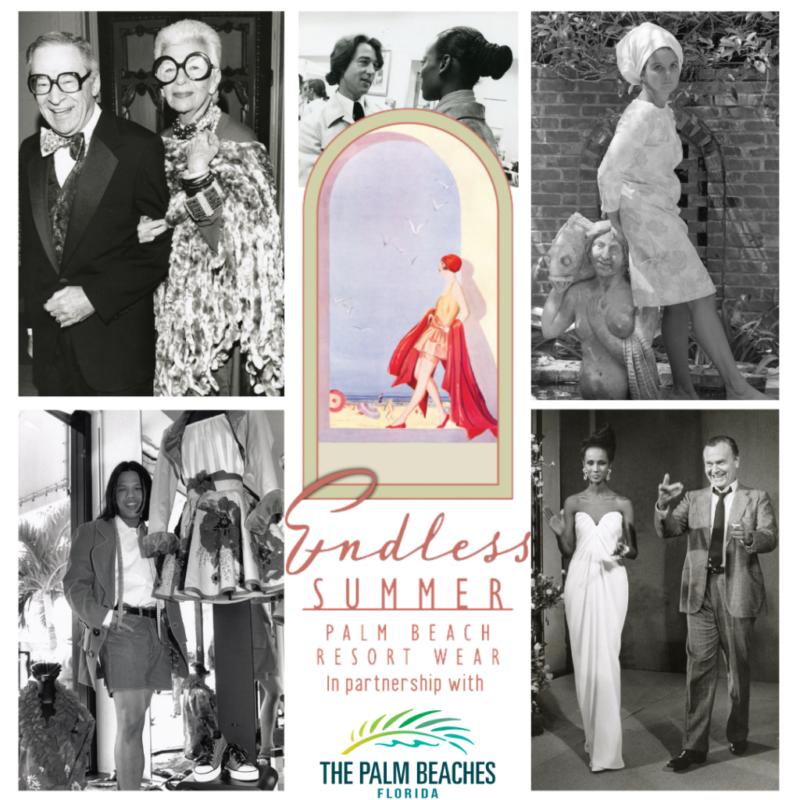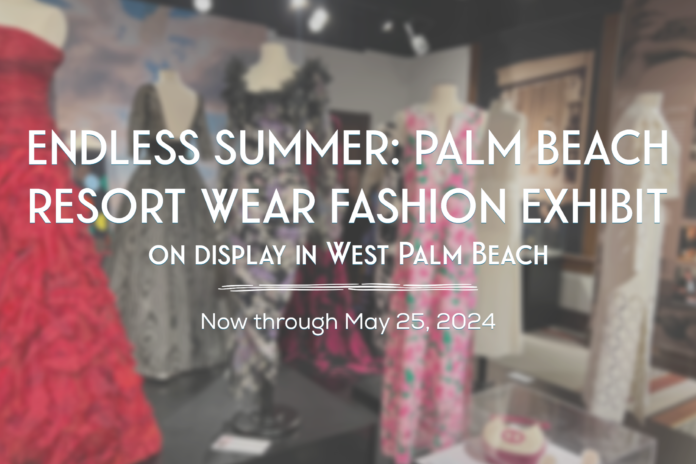The Endless Summer: Palm Beach Resort Wear fashion exhibit is on display in West Palm Beach from now through May 25, 2024, at the Richard and Pat Johnson Palm Beach County History Museum.
Palm Beach is known as the southern winter resort counterpart to the Northeast. For decades, celebrities, prosperous well-known families, and notable figures have called Palm Beach their home for the winter. Part of the mystique of Palm Beach is its elusive high-profile residents. This tropical escape, for those fleeing the harsh winters up north, sets the bar for fashionable resort wear. Some of the most iconic resort outfits originated in Palm Beach. The Endless Summer Fashion exhibit explores the impact Palm Beach made on resort fashion over the last 129 years as it solidified itself as one of America’s premier luxury destinations, where winter comes to summer. In this top fashion hub, brands such as Gucci, Oscar de la Renta, Carolina Herrera, Valentino, and St. John, as well as iconic fashion influencers such as Jacqueline Kennedy, Lilly Pulitzer, and Iris Apfel adopted fresh new looks, ingenuity, and a philanthropic spirit.
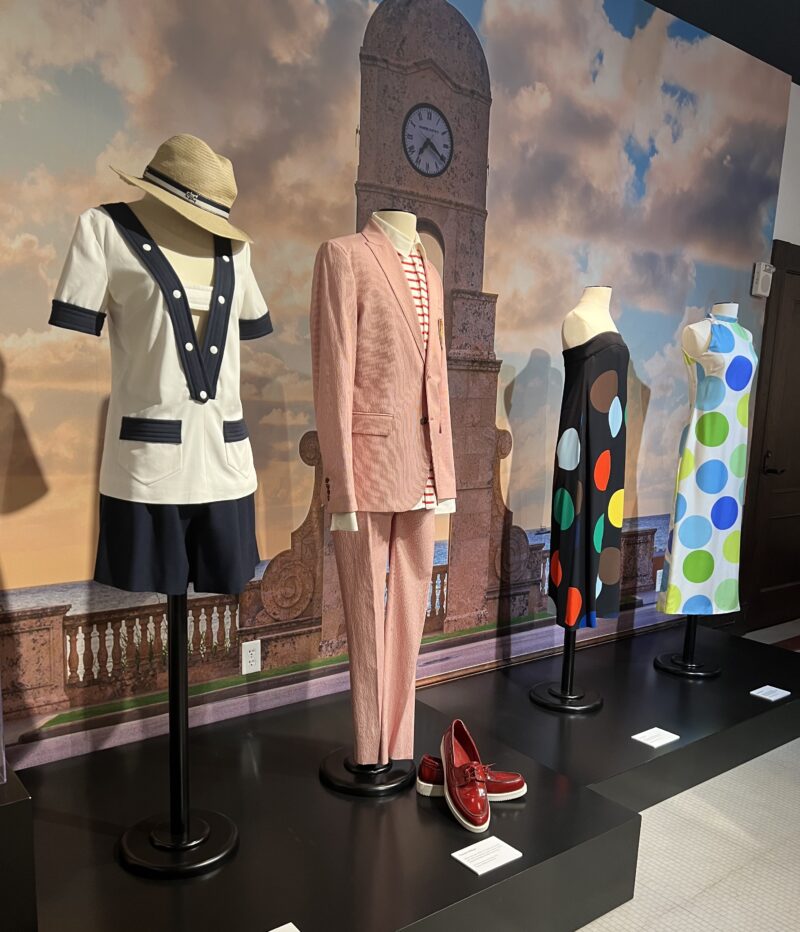
Fashion is often influenced by culture, climate, and lifestyle. Cities have their own unique fashion styles and trends that reflect the local identity. With the opening of the Everglades Club in 1919, Paris Singer and Addison Mizner’s plan to create the “American Riviera” in Palm Beach was in full swing. Adjacent Worth Avenue became a vibrant community of designers and merchants. In conjunction with the end of World War I and women gaining the right to vote, society became more socially progressive. Vivacious expressions of art converged with commerce to inspire unique styles of clothing, such as the “new” cocktail dress. The resort wear fashion that originated in Palm Beach continues to inspire and influence fashion trends on a national scale. Residents and visitors want to be dressed appropriately but still fashionable for lunch, dinner, tennis, pickleball, golf, or even a swim. Couture reigned supreme, and “who” one wore became more important than “what” one wore.
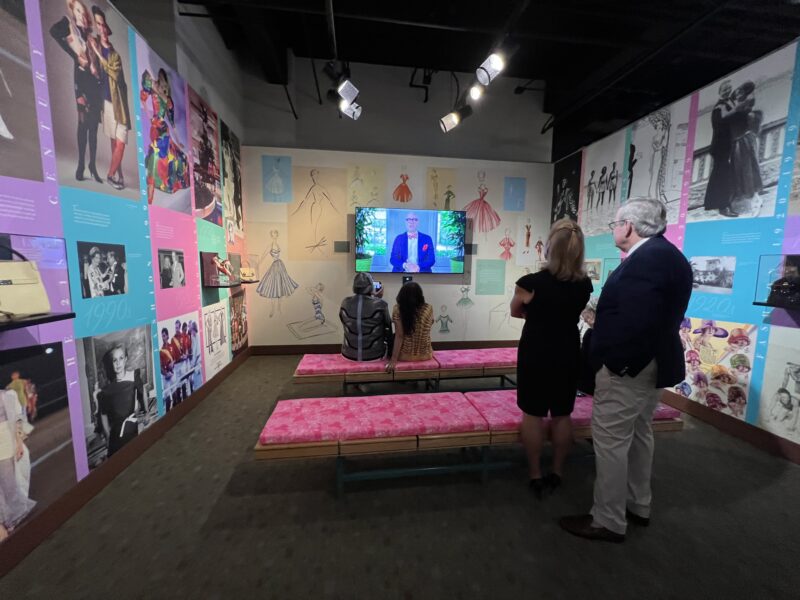
The Endless Summer Resort Wear Fashion exhibit showcases many famous designers, stylists, outfits, and fashionable figures. Let’s dive into several important designers and stylists who defined resort style on Palm Beach.
Stylist Martha Phillips
Resort wear wouldn’t be the same without Martha Phillips. Born in 1898 and known simply as Martha to those in the industry, and Miss Martha to her employees, she owned and operated boutiques in New York and Palm Beach. She was a notorious force in luxury fashion for more than 60 years. Not only did she create strong relationships with many of the world’s top designers, but she is credited with bringing a number of international brands to the U.S. fashion circuit. Martha is also known for her loyal clientele that included top socialites and many notable figures. She was the go-to stylist for Marjorie Merriweather Post, Jackie Kennedy, Doris Duke, Brooke Astor, Gloria Vanderbilt, Diana Ross, and many more. In her efforts to curate the best looks for her clients, she spotlighted such names as Valentino, Yves Saint Laurent, Fendi, Halston, Geoffrey Beene, James Galanos, Pauline Trigere, Bill Blass, Oscar de la Renta, and Zandra Rhodes. She was one of the first buyers to scout Europe, starting in the fifties when she brought back couture clothes for specific customers.
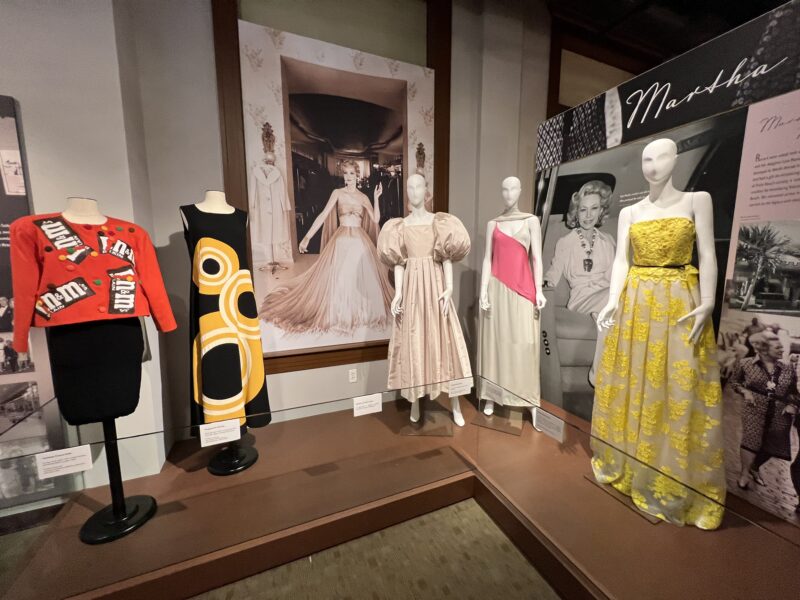
Valentino
Scouted by stylist Martha Phillips and introduced to her Palm Beach clients in the late 1960s, Italian-born Valentino was worn by many notable Palm Beach socialites. Born in 1932, Valentino Clemente Ludovico Garavani, known as Valentino, became interested in fashion at a very young age. Starting in primary school, Valentino was attracted to fashion design and had a curiosity for quality apparel. He went on to intern with two Parisian fashion houses and established himself as an accomplished designer. Valentino became known for his red dresses, in the bright shade that became his signature in the fashion industry as “Valentino red.” At some point in 1964, Jacqueline Kennedy had seen Gloria Schiff wearing a two-piece ensemble in black organza at a gathering. It made such an impression that Kennedy contacted Ms. Schiff to learn the name of the ensemble’s designer, which was Valentino. He became a favorite of the widowed Jackie Kennedy, who ordered six of his black and white dresses. Other notable figures dressed by Valentino include Brooke Shields, Cindy Crawford, and Claudia Schiffer.
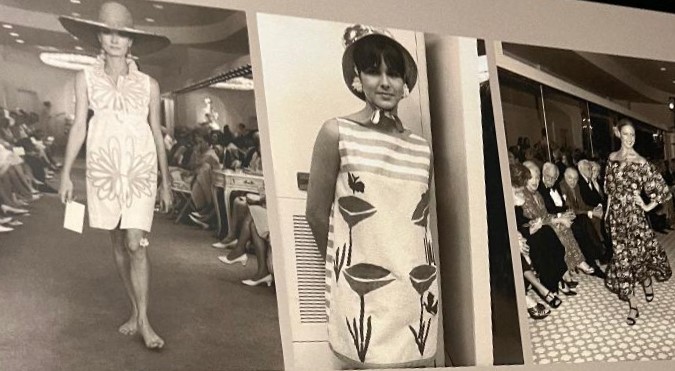
Halston
Designer Roy Halston Frowick was born in 1932. In 1953, at the age of 21, he opened a hat shop. In January 1961, his career took off when incoming First Lady Jackie Kennedy wore his custom-designed pillbox hat to her husband’s inauguration. Jackie Kennedy was a style icon in Palm Beach and her wardrobe highly influenced fashion on the island. Simply known as “Halston,” he brought glamour and innovation to the fashion world. The halter top, high-rise dress, and Ultrasuede fabric are all products of his design genius. Halston has also been worn by Greta Garbo, Margeaux Hemingway, Iman, Liza Minelli, Elizabeth Taylor, Sarah Jessica Parker, and Anne Hathaway, to name a few.
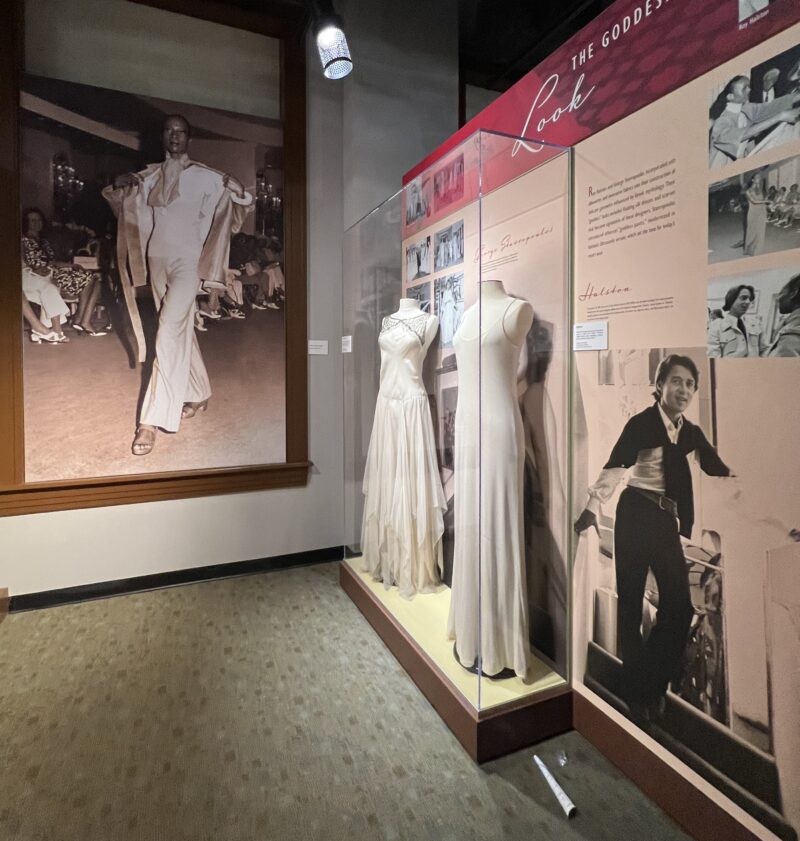
Oscar de la Renta
Óscar Arístides Renta Fiallo, known professionally as Oscar de la Renta, is a Dominican fashion designer born in Santo Domingo in 1932. He was trained by Cristóbal Balenciaga and Antonio del Castillo. Oscar de la Renta became internationally known in the 1960s as one of the couturiers who dressed Jackie Kennedy. His dresses were extraordinary, both the daywear, which defined the idea of discreet luxury, and the colorful evening gowns made of chiffon, lace, and sequins. Oscar de la Renta gowns and caftans are essential tropical island wear that are loose and cool out of necessity. These timeless, elegant, easy, flowing garments are suitable for any time of day and any use, from brunch to travel and even an evening dinner event.
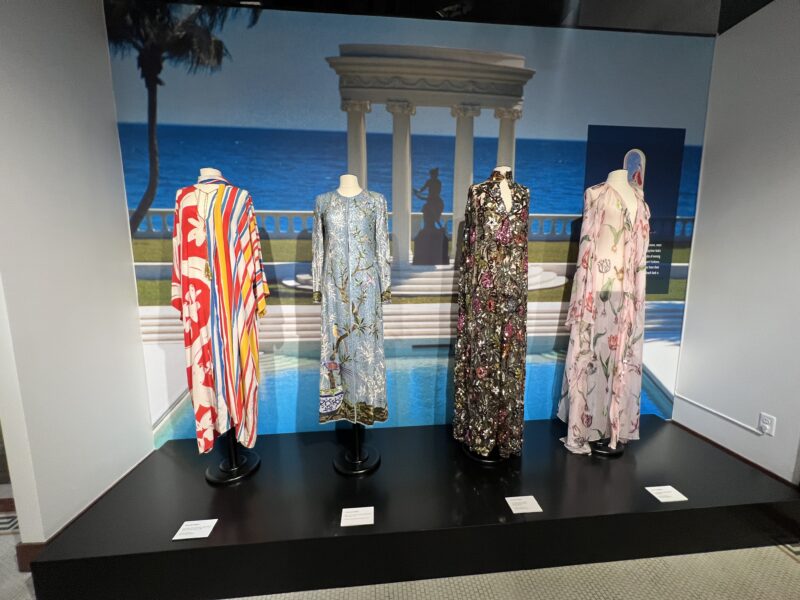
Pauline Trigère
Daughter to a tailor and a dressmaker, Pauline Trigère, a French-born Jew, emigrated to the United States with her family in 1937. Due to her family’s endeavors, Trigère was a skilled seamstress by the age of ten and designed her first dress in her teens. She opened her first fashion house in 1942 with only a dozen dress designs, highlighting her mastery of fit and structure. Working without sketches, she utilized expertly cut wool and cotton to enhance evening dresses in a simple yet refined style. Trigère is known for introducing the jumpsuit, the sleeveless coat, the reversible cape, and the embroidered sheer bodice to high fashion. All of these pieces are now considered staples in resort wear. Her loyal clients included Grace Kelly, Jacqueline Kennedy, Elizabeth Taylor, and Evelyn Lauder.
Lilly Pulitzer
For six decades, the Lilly Pulitzer name and signature fashions have been recognized as leading symbols of tropical resort wear and the true icon of Palm Beach style. What started as a simple solution to camouflage juice stains on garments turned into a national phenomenon. Lillian “Lilly” McKim Pulitzer-Rousseau was born in 1931. She settled in Palm Beach shortly after her marriage to her first husband Herbert “Peter” Pulitzer. Together they owned several orange groves and eventually Lilly began to sell fruit juice from a stand in Palm Beach. In 1960, Lilly had her seamstress create a few patterned shift dresses to hide juice stains while she sold her orange juice. The shift dresses became so popular that she began to sell them from her juice stand and over time the Lilly Pulitzer brand symbolized fashion in a carefree sunny place.
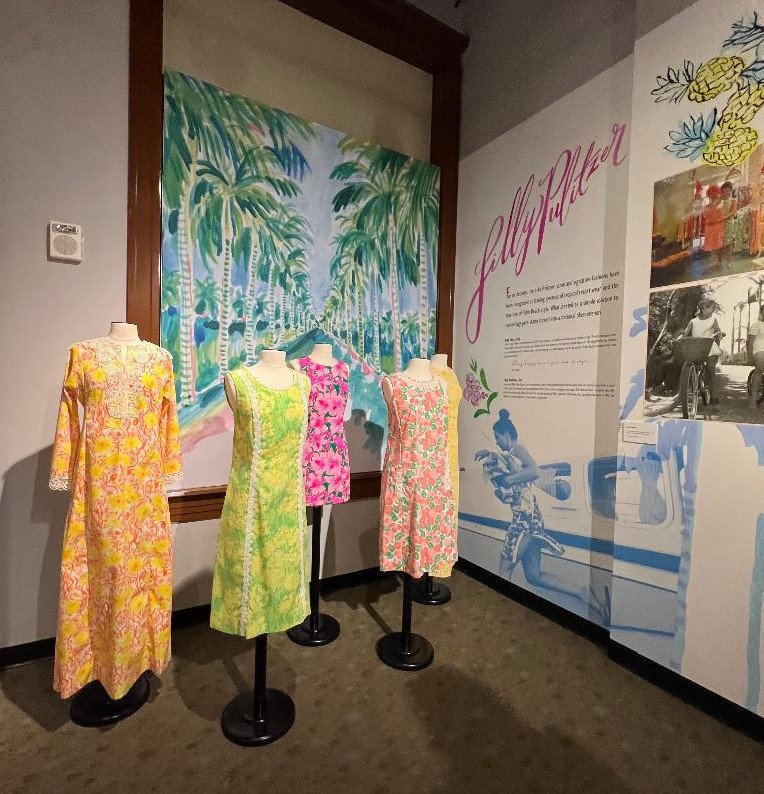
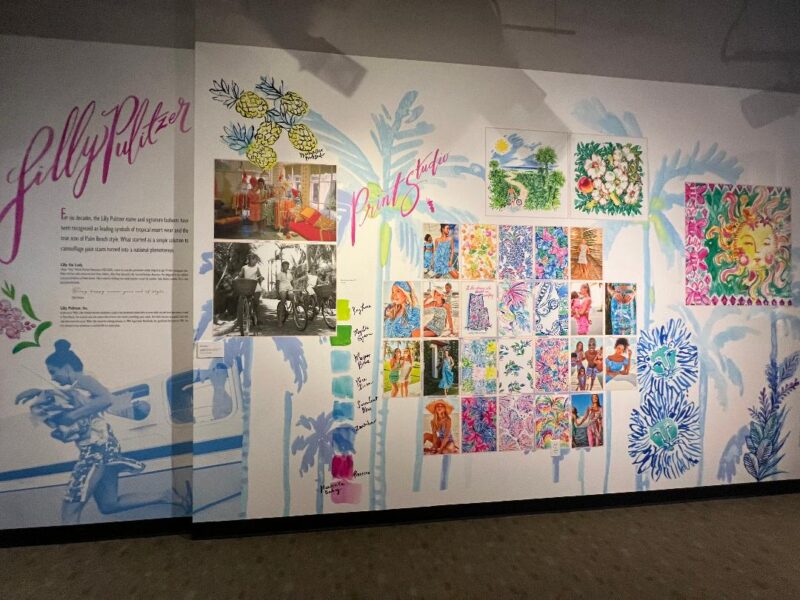
Emilio Pucci
Italian-born Emilio Pucci was born in 1914 and got his start designing clothing in a unique way. An Olympic level skier, Pucci’s first clothing design was the Reed College ski team’s uniform, using stretchy fabrics. His designs were brought to the attention of the fashion industry when skiwear he designed for a female friend was photographed and featured in Harper’s Bazaar. Pucci was the first to design a one-piece ski suit. He used his knowledge of stretch fabrics to design swimwear and other active pieces to incorporate into a vacationers wardrobe. Pucci eventually expanded to designing for the modern woman, creating elegant designs in kaleidoscopic colors, geometric prints, and comfortable fabrics which are perfect for wearing on vacation to tropical climates. His designs have been worn by Marilyn Monroe, Sophia Loren, Jackie Kennedy, and Madonna.

Carolina Herrera
Venezuelan Carolina Herrera encountered the fashion world at an early age, attending Dior and Balenciaga shows with her grandmother in Spain and France. Herrera began her professional career as a publicist and boutique manager for Emilio Pucci. Herrera’s first collection in 1981 emphasized international style with tailored fits and was showcased by Martha Phillips. From elegant day dresses and floor-sweeping maxis to iconic shirt dresses, Herrera’s designs are ideal for resort leisure. Her retail presence spanned 280 stores across 104 countries. She has dressed many First Ladies, including Jackie Kennedy, Laura Bush, Michelle Obama, and Melania Trump.
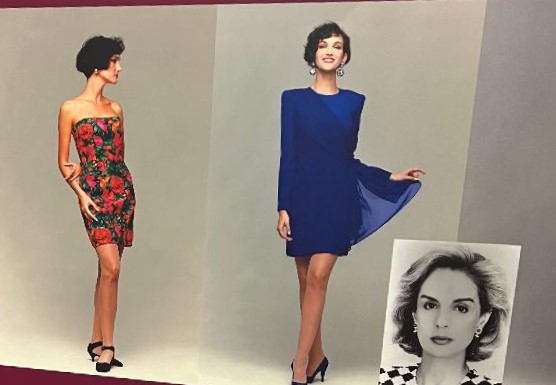
Stubbs & Wootton
Since 1993, Stubbs & Wootton has rooted itself in scenes of gentlemanly sport and leisure as painted by English artists George Stubbs and John Wootton in the 18th century. Specializing in luxury slippers designed to accompany anything from a tuxedo to shorts, the company sells handmade footwear with intricately detailed needlepoint and embroidery as a form of elevated, everyday wear in Palm Beach.
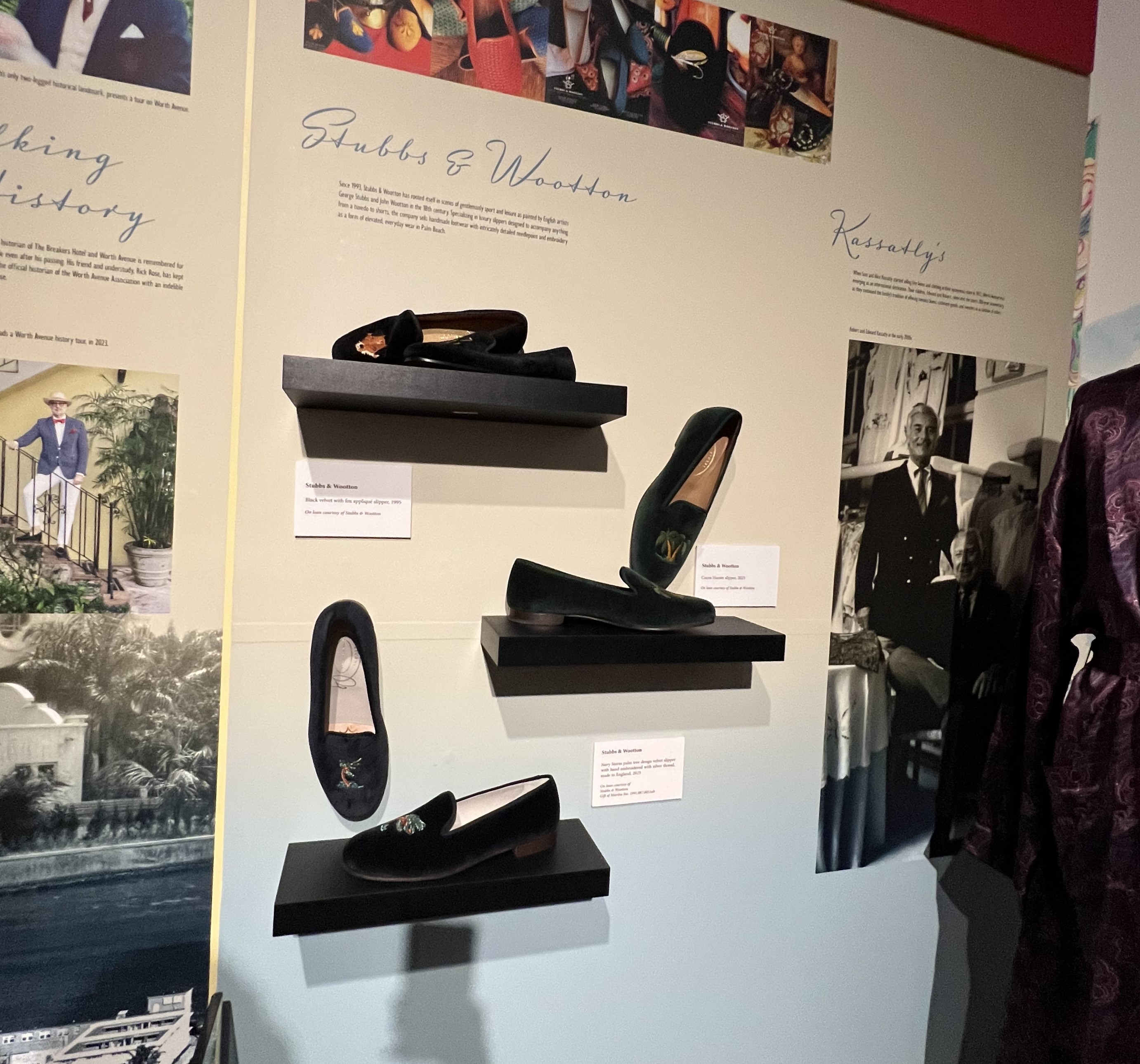
St. John
Founded in 1962 by model Marie St. John, this American brand specializes in women’s luxury knitwear with a distinct knit blend that is resilient and doesn’t wrinkle. Knitwear offers flexibility and breathability that adapts to the body, making it an essential part of resort wear. St. John is a symbol of effortless fashion with its classic and timeless styles. The popular brand has been worn by many celebrities including Diane Sawyer, Martha Stewart, Katie Holmes, Kerry Washington, Angelina Jolie, Tinsley Mortimer, and Hillary Clinton.
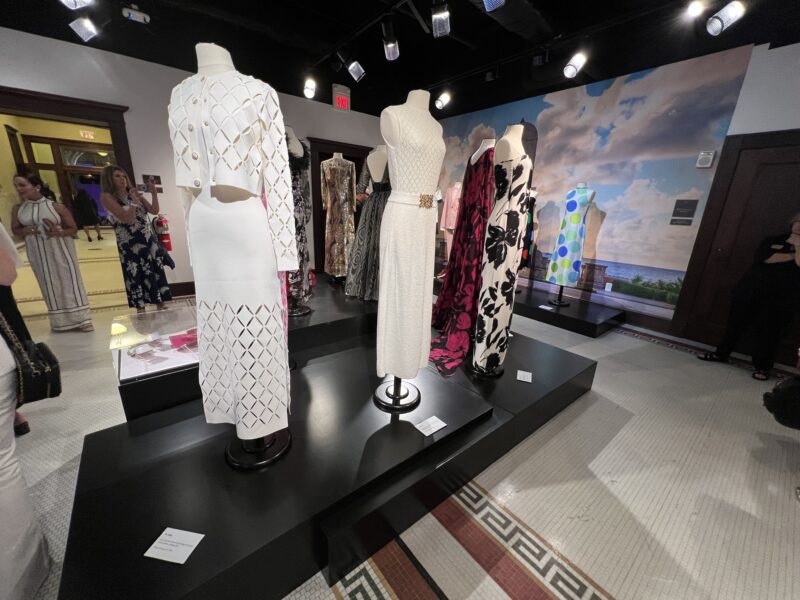
Guccio Gucci
Taking an interest in the handbags and luggage he encountered as a bell boy while at London’s Savoy Hotel, Guccio Gucci was inspired by the fashion of travelers. In his time handling baggage at the Savoy Hotel, he learned about wealthy clients’ taste in fashion, quality, fabrics, and travel lifestyles. He further enhanced his experience with luxury travel by working for a European rail company that specialized in upscale travel leisure. Gucci gained even more knowledge of quality bags by working for Franzi, a maker of fine luggage. In 1921, he bought his own shop in Florence, where he sold imported leather luggage. He also opened a small workshop to have his own leather goods made by local craftsmen. In 1935, the war led the League of Nations to impose a trade embargo on Italy. Leather became scarce, pushing Gucci to introduce other fabrics in his products, such as raffia, wicker, wood, linen, and jute. After the war in 1947, Gucci sold his shares of the company to his three sons who continued operations. Years later, Gucci opened their first U.S. store in New York in 1953. Due to the connection of wealthy travelers heading to South Florida from New York for the winter, he launched a store in Palm Beach in 1961. Gucci became a staple brand in the wardrobes of socialites and high-profile figures traveling across the country.
Alfred Fiandaca and Arnold Scaasi
The designs of Fiandaca and Scaasi set the standard for evening attire for any occasion. Recognized for their glamorous, extravagant designs, the “Kings of Palm Beach Couture” captivated their clients.
A third-generation garment maker, Italian-born Alfred Fiandaca studied at the Fashion Institute of Technology in New York City before moving to Boston, where he opened his first storefront in 1965. During his 48-year career, Fiandaca transformed the role of women’s fashions from tools that advertised the wealth of their husbands to individualized expressions of power. In 1985, Fiandaca designed a dress for Joan Collins to wear on Dynasty, then the most expensive outfit ever commissioned for a television show. He opened a Palm Beach storefront in 1996 to showcase his whimsical women’s evening wear. Fiandaca was worn by many high-profile figures including Audrey Hepburn, Nancy Regan, Jackie Kennedy, Lauren Bacall, and Ann Romney.
Canadian Arnold Isaacs, known as Arnold Scaasi, decided to pursue a career in fashion at the age of fourteen during a trip to Australia to visit a stylish aunt. He studied fashion design in Montreal and Paris and then apprenticed at the House of Paquin. In the early 1950s, he moved to New York and his designs began appearing in a variety of print ads, including one for General Motors. During the shoot he met Robert Denning, who suggested he reverse his last name to give himself an Italian flair. Under his new name he achieved the December 1955 cover of Vogue, which led to his starting a ready-to-wear line the following year. Scaasi has created gowns for First Ladies Mamie Eisenhower, Barbara Bush, Hillary Clinton, and Laura Bush, in addition to such notable personalities as Joan Crawford, Ivana Trump, Diahann Carroll, Elizabeth Taylor, Catherine Deneuve, Brooke Astor, Mitzi Gaynor, and Mary Tyler Moore.
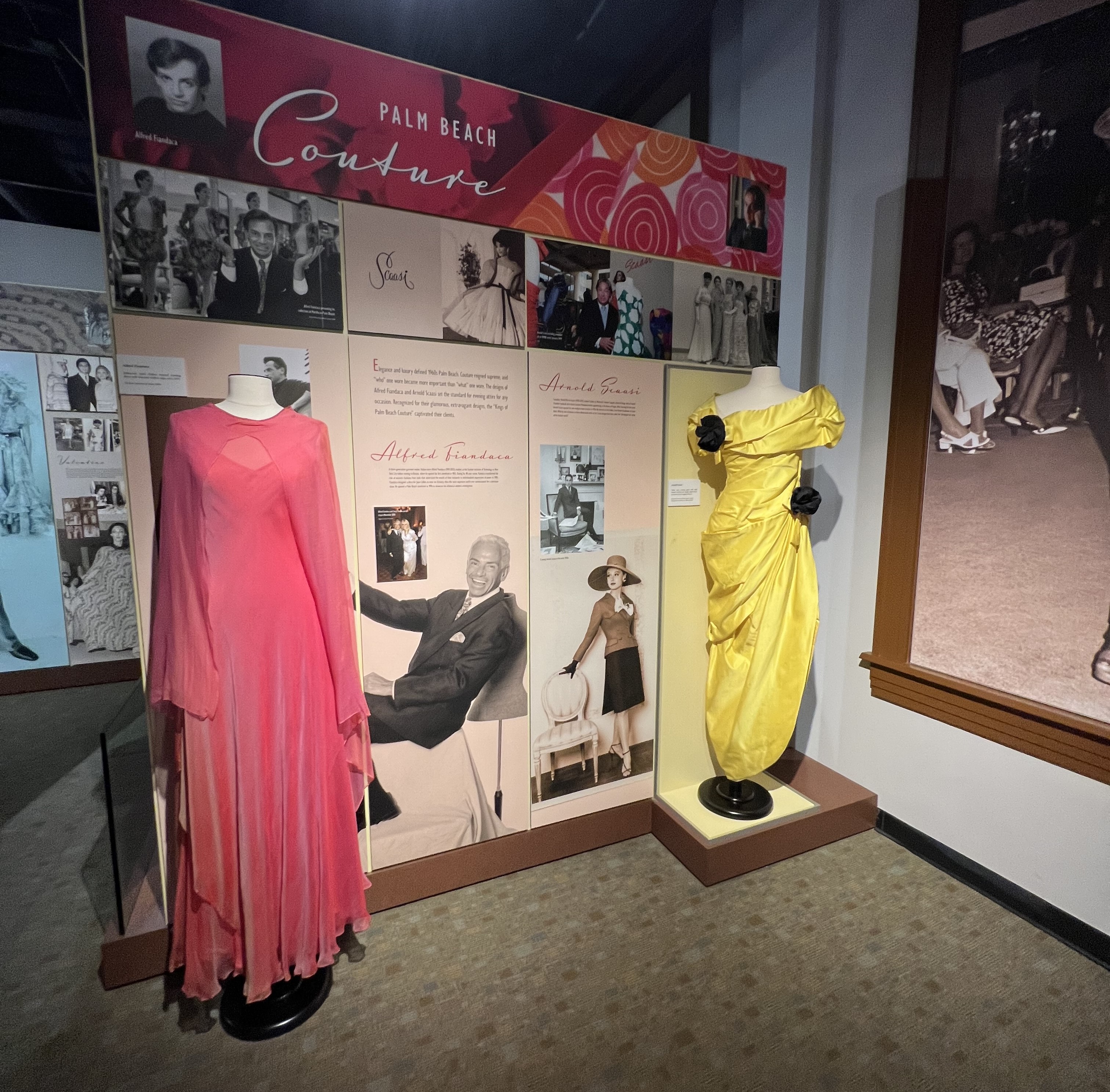
Resort wear is an important part of fashion history, and all of the big names above played a role in the fashionable travel aesthetic. Taking a holiday and vacationing to resort destinations ushered in the need for new items of clothing designed specifically to be worn at resorts and tropical places. With so many different activities happening while on vacation, guests often wear different attire for each event. This offered not just the opportunity for relaxation, but also the opportunity to be seen. The public was fascinated by the international elite’s every move. Fashion writers made a point to visit where the elite vacationed in order to photograph and write about who they were wearing. The writers’ stories and images of celebrities and socialites’ chic outfits became known internationally and helped to popularize the idea of resort wear and the designers who contributed to the style.
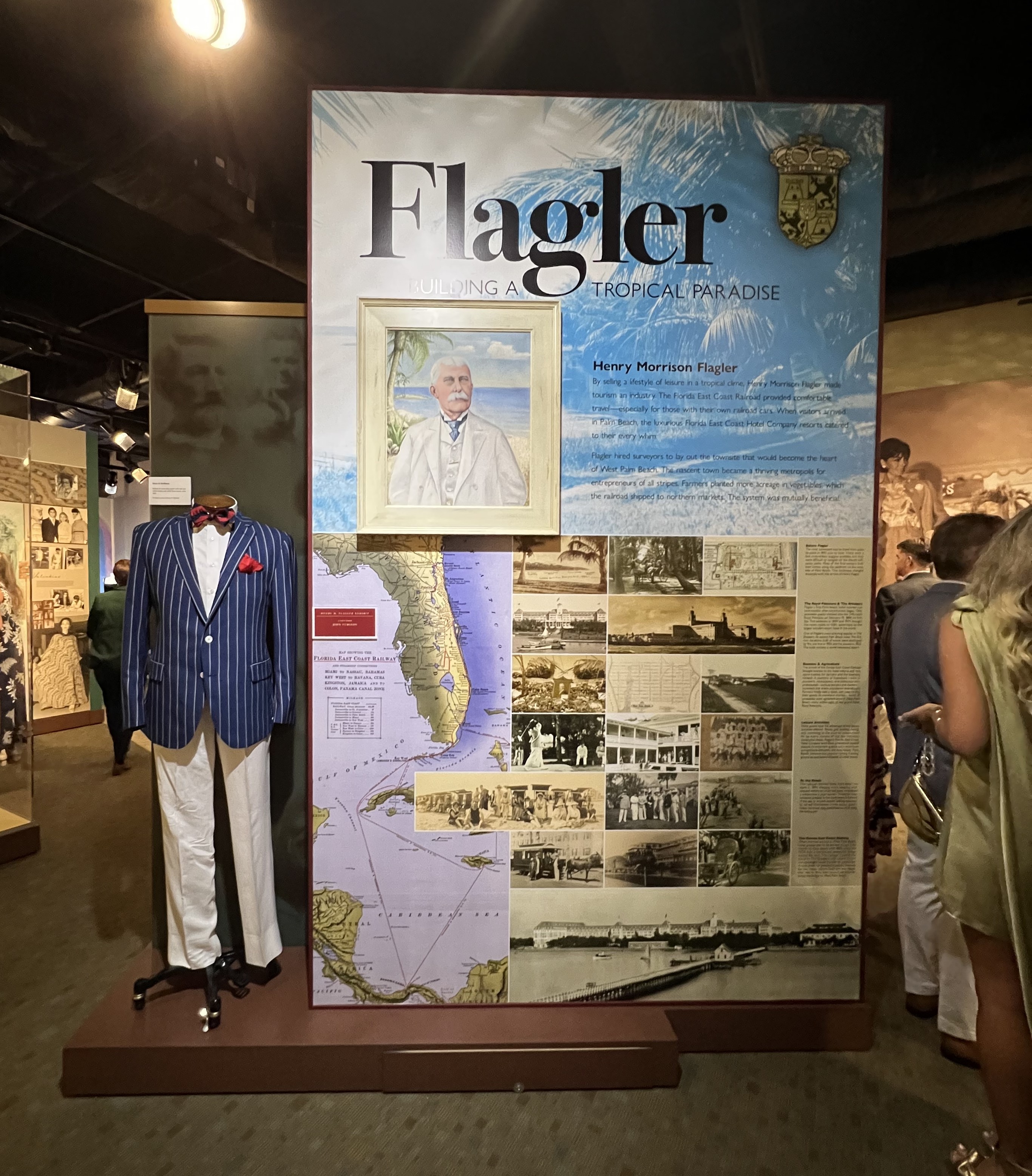
Many designers and outfits are featured on display at the Endless Summer: Palm Beach Resort Wear fashion exhibit for you to get an up close and personal view of the famous ensembles worn by some of the biggest names in fashion. There’s many more we didn’t mention in this article so be sure to check out the exhibit to fully experience all of the designers that contributed to resort wear on Palm Beach and globally. Head over to the Richard and Pat Johnson Palm Beach County History Museum located at 300 N. Dixie Highway in West Palm Beach now through May 25, 2024, to view the exhibit.
